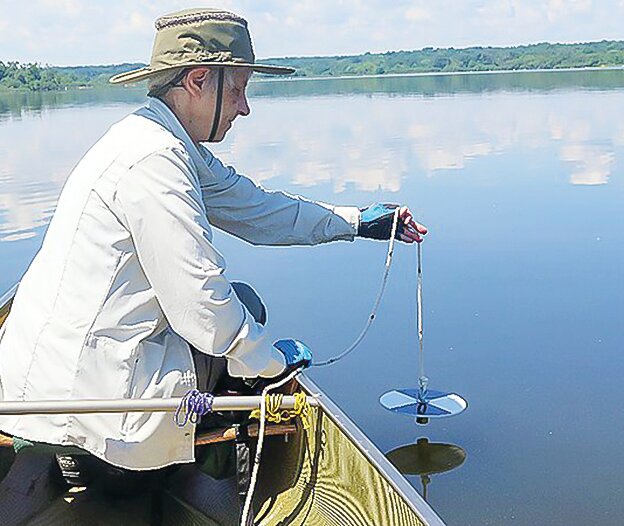Support the Timberjay by making a donation.
MPCA is looking for water quality monitors locally
REGIONAL—The Minnesota Pollution Control Agency is looking for volunteers to serve as part of their Citizen Lake Monitoring Program, and they need volunteers for many lake and stream locations …
This item is available in full to subscribers.
Attention subscribers
To continue reading, you will need to either log in to your subscriber account, below, or purchase a new subscription.
Please log in to continue |
MPCA is looking for water quality monitors locally
REGIONAL—The Minnesota Pollution Control Agency is looking for volunteers to serve as part of their Citizen Lake Monitoring Program, and they need volunteers for many lake and stream locations in northern St. Louis and Lake counties.
Volunteer monitors, who can sign up online with the MPCA, are provided with a Secchi disc for lake monitoring or a Secchi tube for use on streams. Online training on their use, which takes about 20 minutes, is also provided by the MPCA at no cost. Volunteers will need to have a boat, canoe, or some other means of getting out on the lake. Stream readings can typically be taken from shore.
“We’re always looking for more volunteers,” said Waverly Reibel, who coordinates the program.
“They really help to extend our capacity as an agency. For many lakes and streams, volunteers may be the only ones monitoring them on a regular basis.”
The program is a long running effort by the MPCA, now celebrating its 50th year. Over the decades, more than 10,000 volunteers have taken part in the program, with about 1,100 typically involved in any given year, monitoring over 700 lakes and more than 500 stream sites in the state.
While MPCA staff do conduct water quality sampling, it is typically on a ten-year rotation for each watershed, which can allow many water quality changes to occur during the interim. Generally, the sooner water quality problems are detected, the easier and less expensive it is to restore the lake to its previous state.
Secchi disk readings, when done consistently over a long period of time, provide a valuable means of detecting trends in water quality. Volunteers typically take Secchi disk readings during daylight hours when the weather is calm. For consistency, taking readings from generally the same location is helpful. Taking readings at the same time of year during the open water season also helps to make any data gathered more useful in detecting long-term trends in water quality.
“It’s super important data for us,” said Reibel.
Dozens of stream locations, including on the Littlefork, Rice, Sturgeon, Ash, Elbow, and Embarrass rivers, are in need of monitoring.
Area lakes in need of monitors include Ash, Ban, Bass, Big Rice, Eagles Nest 2, Echo, Garden, Low, Johnson, Kabetogama, Lost, Moose (by Orr), Muckwa, Nett, Myrtle, Susan, Sunset, Twin, and Wolf. Many of dozens of lakes in the Boundary Waters are also in need of monitoring as well, according to Reibel, although access can make that challenging.
In order to address that issue, the MPCA has a monitoring program specifically designed for the Boundary Waters. Anyone planning a trip to the wilderness who would like to help gather water quality data, can contact the MPCA for a lightweight sampling kit that they could use on lakes that they visit, and then send in the data once they’re back home. “It’s more of a one-off approach, but it’s still useful data,” said Reibel.
If you’d like to volunteer to monitor a lake near you, go to www.pca.state.mn.us/get-engaged/find-a-site-and-sign-up to find an interactive map of lake and stream locations needing monitors.






